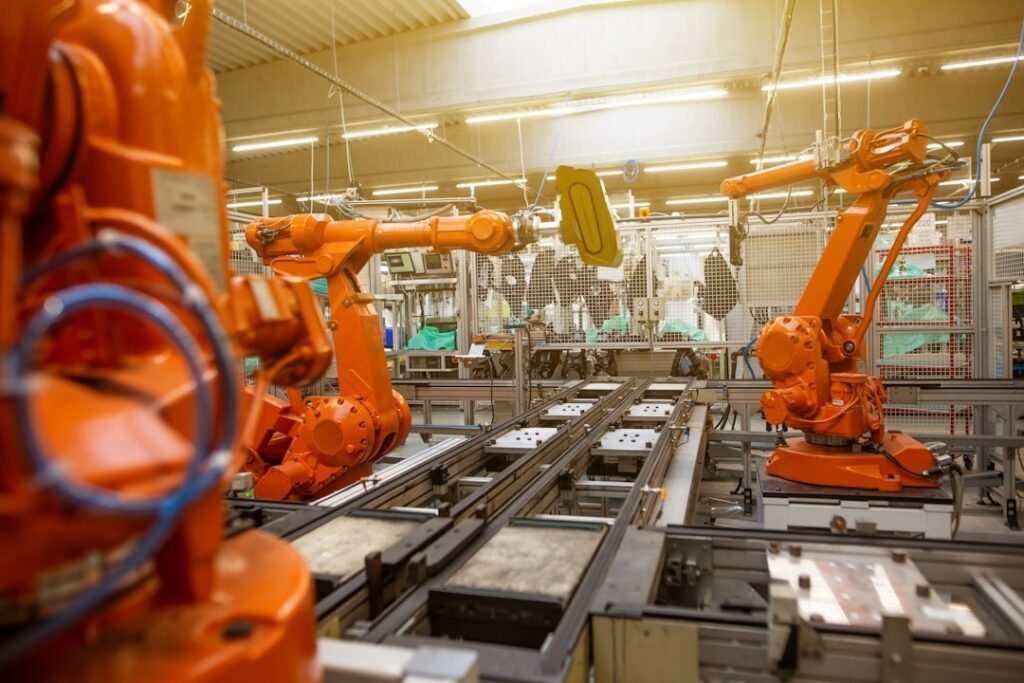
Total Productive Maintenance in a Manufacturing Environment
Total Productive Maintenance (TPM) is a proactive approach to maintenance that aims to improve the reliability and efficiency of equipment in a manufacturing environment. By implementing TPM, companies can reduce downtime, increase productivity, and improve overall site reliability.
Implementing the Key Pillars of TPM
TPM is built on the foundation of eight key pillars, each focusing on a different aspect of maintenance and reliability. These pillars are essential for successful implementation of TPM in a manufacturing environment.
Pillar 1: Autonomous Maintenance
Autonomous Maintenance involves empowering operators to take responsibility for the routine care and maintenance of their equipment. By training operators to perform simple maintenance tasks, such as cleaning, inspection, and lubrication, companies can reduce the reliance on maintenance staff and improve overall equipment reliability.
Pillar 2: Planned Maintenance
Planned Maintenance focuses on the systematic scheduling of maintenance activities to prevent breakdowns and unplanned downtime. This pillar involves creating a maintenance plan based on equipment condition, performance, and historical data. By conducting regular inspections and preventive maintenance, companies can identify and address potential issues before they lead to equipment failure.
Pillar 3: Quality Maintenance
Quality Maintenance aims to eliminate defects and improve product quality by addressing equipment-related issues. This pillar involves implementing measures to prevent equipment-related defects, such as implementing error-proofing mechanisms and conducting regular inspections to ensure equipment is functioning within specified parameters.
Pillar 4: Training and Education
Training and Education is crucial for successful TPM implementation. This pillar involves providing comprehensive training to operators, maintenance staff, and other employees involved in the maintenance process. By equipping employees with the necessary skills and knowledge, companies can ensure effective implementation of TPM practices.
Pillar 5: Early Equipment Management
Early Equipment Management focuses on the design and development of equipment to ensure reliability and maintainability. This pillar involves considering maintenance requirements during the equipment design phase, implementing effective maintenance strategies, and continuously improving equipment performance and reliability.
Pillar 6: Safety, Health, and Environment
Safety, Health, and Environment is a critical pillar of TPM that emphasizes the importance of creating a safe and healthy work environment. This pillar involves implementing safety measures, conducting regular risk assessments, and promoting a culture of safety and environmental responsibility.
Pillar 7: Office TPM
Office TPM extends the principles of TPM to administrative and support processes within the organization. This pillar involves applying TPM concepts, such as standardized work, visual management, and continuous improvement, to office operations. By eliminating waste and improving efficiency in administrative processes, companies can enhance overall organizational performance.
Pillar 8: TPM in Supply Chain
TPM in Supply Chain focuses on extending TPM principles to suppliers and customers, creating a collaborative approach to maintenance and reliability. This pillar involves working closely with suppliers and customers to ensure the quality and reliability of incoming materials and finished products. By establishing strong partnerships and implementing effective communication channels, companies can improve overall supply chain performance.
Changing the Culture
Implementing TPM requires a cultural shift within the organization. To successfully change the culture, companies should focus on the following strategies: 1. Leadership Commitment: Top management should demonstrate a strong commitment to TPM and actively participate in its implementation. This commitment sets the tone for the rest of the organization and encourages employee buy-in. 2. Employee Involvement: Employees should be involved in the TPM implementation process from the beginning. This involvement can include participation in training programs, problem-solving activities, and continuous improvement initiatives. 3. Communication and Collaboration: Effective communication and collaboration are essential for successful TPM implementation. Companies should establish clear channels of communication, encourage feedback and suggestions from employees, and foster a collaborative environment where everyone works towards common goals. 4. Continuous Improvement: TPM is a continuous improvement process. Companies should encourage a culture of continuous learning and improvement, where employees are encouraged to identify and address issues proactively. 5. Recognition and Rewards: Recognizing and rewarding employees for their contributions to TPM implementation can help reinforce the desired behaviours and motivate further engagement. By implementing the key pillars of TPM and focusing on changing the culture, companies can improve site reliability, reduce downtime, and achieve higher levels of productivity in their manufacturing environment.
Facebook Twitter Youtube